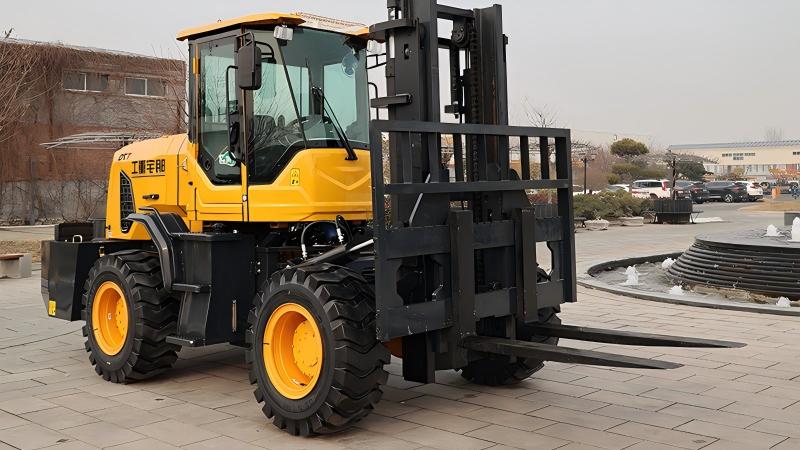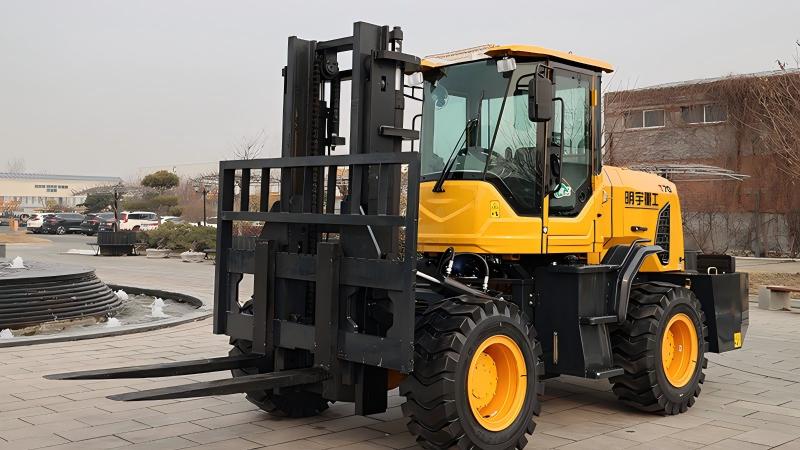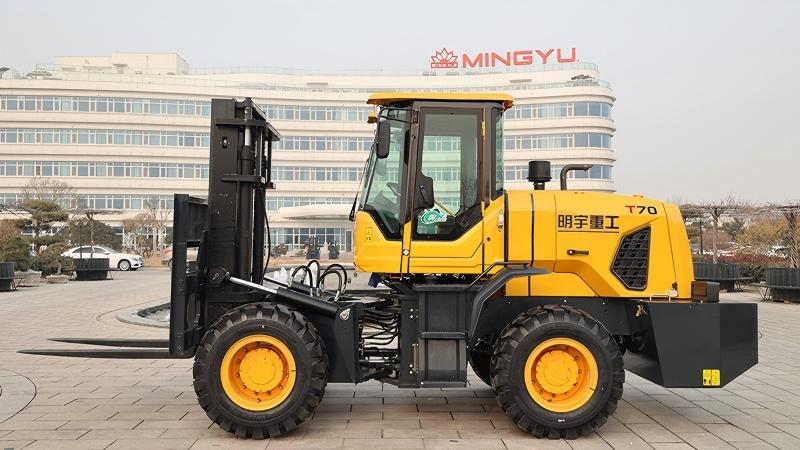The distinction between a standard forklift and an off-road forklift is foundational, rooted in their intended operational environments and the engineering philosophies that follow. At its core, a standard forklift, often referred to as a warehouse or industrial forklift, is meticulously designed for the predictable, smooth, and controlled confines of indoor spaces. Think of the vast, polished concrete floors of a distribution center, a manufacturing assembly line, or a retail stockroom. In these settings, the primary demands are maneuverability in tight aisles, stability on level surfaces, and minimal emission output to protect indoor air quality. Consequently, standard forklifts often feature compact designs, tight turning radii, and utilize either cushion tires made of solid rubber for extremely smooth surfaces or solid pneumatic tires for slightly more varied indoor/outdoor transition areas. Their mast design is optimized for vertical lifting in high-bay warehouses, and they are predominantly powered by electricity (for zero emissions) or internal combustion engines running on propane, which burns cleaner than diesel. The entire machine is a testament to efficiency and precision in a controlled ecosystem, where factors like ground clearance and suspension systems are secondary considerations, as the terrain presents no significant challenges.
Conversely, the off-road forklift is engineered as a rugged workhorse, built to conquer the unpredictable and often hostile conditions of outdoor job sites. Its very essence is defined by resilience and power in the face of adversity. Imagine a bustling construction site with muddy ruts, a lumber yard with uneven ground and debris, or a port facility dealing with gravel and slopes. These environments demand a machine with a completely different set of capabilities. Off-road forklifts are immediately recognizable by their massive, deep-tread pneumatic tires, which are essential for providing the necessary traction and flotation on soft, loose, or uneven ground. These tires act as a primary suspension system, absorbing shocks and bumps that would easily incapacitate a standard forklift. Furthermore, these machines boast significantly higher ground clearance to navigate over obstacles without getting hung up. Their frames are heavier and more robust to withstand the constant twisting and jarring impacts, and their engines are almost exclusively high-torque diesel engines, chosen for their durability, power, and ability to operate for extended periods under heavy load. The operator's compartment is also often designed with enhanced suspension and weather protection, acknowledging the harsh realities of outdoor work.
The divergence in their design philosophies becomes starkly evident when examining their tire and power systems, which are among the most critical differentiators. Standard forklifts, operating on smooth concrete, typically employ cushion tires. These are solid, smooth-surfaced tires that offer extremely low rolling resistance, which is ideal for energy efficiency and preserving floor surfaces. They provide minimal shock absorption but are perfect for the job they are designed for. Some standard models may use solid pneumatic (pressurized) tires for slightly more versatility to move between a loading dock and a paved yard. In contrast, the off-road forklift is unequivocally equipped with large, rugged, air-filled pneumatic tires with deep, aggressive treads. These tires are not just for traction; they are a fundamental part of the machine's suspension, cushioning the entire chassis and load from the jarring irregularities of the ground. This pneumatic system allows the tire to conform to the terrain, providing a larger contact patch and preventing the machine from sinking into soft ground. Power source selection follows a similar logic of specialization. Electric and propane power dominate indoors for their cleanliness and quieter operation. Off-road, diesel reigns supreme due to its raw power, torque for climbing grades with a load, and fuel efficiency for long, demanding shifts far from a power outlet.
Ultimately, the choice between a standard and an off-road forklift is not a matter of superiority but of application-specific suitability. Selecting the wrong type for the environment can lead to catastrophic inefficiency, rapid equipment degradation, and serious safety hazards. Deploying a standard forklift on a construction site would quickly result in tire damage, instability, and an inability to traverse basic terrain, creating a tipping risk. Conversely, using a massive off-road forklift inside a warehouse would be equally problematic; its large, dirty tires would mark floors, its wide frame would not fit in standard aisles, its diesel emissions would be hazardous indoors, and its rough-terrain suspension would be unnecessary and potentially less stable on perfectly smooth concrete. Therefore, understanding this critical distinction is paramount for operational safety, productivity, and cost-effectiveness. Businesses must conduct a thorough analysis of their primary operating terrain—the consistent, flat world of the warehouse versus the dynamic, challenging realm of the outdoors—to invest in the right tool that ensures both performance and operator safety.
Post time:Oct.14.2025



